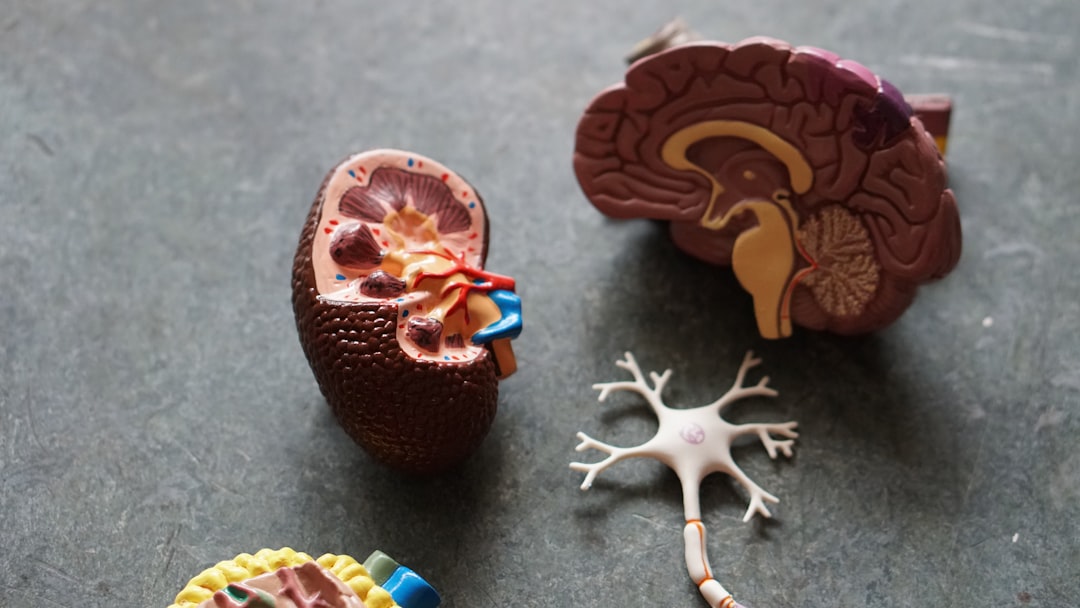In recent years, the rapid advancement of artificial intelligence (AI) has opened new frontiers in various fields, including communication technologies. One of the most promising applications of AI is in the realm of sign language translation. This innovative approach aims to bridge the communication gap between hearing individuals and those who are deaf or hard of hearing.
By leveraging machine learning algorithms and computer vision techniques, AI-driven sign language translation systems can analyze, interpret, and convert sign language gestures into spoken or written language, and vice versa. This technology not only enhances accessibility but also fosters a more inclusive society where everyone can participate in conversations without barriers. The development of AI-driven sign language translation is a testament to the potential of technology to address real-world challenges.
As society becomes increasingly aware of the importance of inclusivity, the demand for effective communication tools for the deaf and hard of hearing community has surged. AI-driven solutions are being designed to recognize the nuances of various sign languages, accommodating regional dialects and individual signing styles. This evolution in communication technology represents a significant step forward in ensuring that all individuals, regardless of their hearing ability, can engage meaningfully with one another. AI systems are revolutionizing industries, for more information visit AI systems.
Key Takeaways
- AI-driven sign language translation has the potential to revolutionize communication for deaf and hard of hearing individuals.
- Sign language translation is crucial for ensuring equal access to information and communication for the deaf and hard of hearing community.
- AI technology is used to analyze and translate video recordings of sign language by recognizing and interpreting hand gestures and facial expressions.
- Challenges and limitations of AI-driven sign language translation include accuracy, cultural nuances, and the need for continuous improvement and updates.
- AI-driven sign language translation has the potential to greatly impact communication and inclusion for the deaf and hard of hearing community, but ethical considerations must be taken into account in its development and implementation.
The Importance of Sign Language Translation for Deaf and Hard of Hearing Individuals
Sign language serves as a vital means of communication for millions of people around the world who are deaf or hard of hearing. It is not merely a collection of gestures; rather, it is a fully developed language with its own grammar, syntax, and cultural significance.
The ability to translate sign language effectively can significantly enhance social interactions, educational opportunities, and access to essential services. Moreover, the importance of sign language translation extends beyond mere communication; it plays a crucial role in promoting equality and inclusion. When deaf and hard of hearing individuals can communicate seamlessly with their hearing counterparts, it reduces feelings of isolation and marginalization.
This inclusivity not only benefits individuals but also enriches society as a whole by fostering diverse perspectives and experiences. As technology continues to evolve, the integration of AI-driven sign language translation tools can help dismantle barriers and create a more equitable environment for all.
How AI Technology is Used to Analyze and Translate Video Recordings of Sign Language

AI technology employs sophisticated algorithms to analyze video recordings of sign language in real-time or from pre-recorded footage. At the core of this process is computer vision, which enables machines to interpret visual data. By utilizing deep learning techniques, AI systems can be trained on vast datasets containing various sign language gestures, allowing them to recognize patterns and nuances in signing.
This training process involves feeding the AI model thousands of examples, enabling it to learn how different signs correspond to specific words or phrases. Once trained, these AI systems can process video input from cameras or smartphones, identifying hand movements, facial expressions, and body language that are integral to sign language communication. The technology can then translate these visual cues into text or spoken language, facilitating real-time communication between deaf and hearing individuals.
Additionally, advancements in natural language processing (NLP) allow these systems to generate contextually appropriate translations, ensuring that the meaning behind the signs is preserved. This combination of computer vision and NLP represents a significant leap forward in making sign language more accessible to a broader audience.
Challenges and Limitations of AI-driven Sign Language Translation
Despite the promising advancements in AI-driven sign language translation, several challenges and limitations remain. One significant hurdle is the diversity of sign languages across different cultures and regions. For instance, American Sign Language (ASL) differs markedly from British Sign Language (BSL) or Australian Sign Language (Auslan).
Each has its own unique grammar and vocabulary, which complicates the development of universal translation systems. Consequently, AI models must be tailored to specific sign languages to ensure accuracy and effectiveness. Another challenge lies in the subtleties of non-manual markers—facial expressions and body movements that convey additional meaning in sign language.
These elements are crucial for conveying emotions or grammatical nuances but can be difficult for AI systems to interpret accurately. Furthermore, variations in individual signing styles can lead to inconsistencies in translation quality. As a result, ongoing research and development are necessary to refine these systems and enhance their ability to capture the richness of human expression inherent in sign languages.
The Impact of AI-driven Sign Language Translation on Communication and Inclusion
The introduction of AI-driven sign language translation tools has the potential to revolutionize communication for deaf and hard of hearing individuals. By providing real-time translations during conversations, meetings, or public events, these technologies can facilitate smoother interactions between hearing and non-hearing individuals. This newfound ability to communicate effectively can lead to increased participation in various aspects of life, including education, employment, and social activities.
Moreover, the impact extends beyond individual interactions; it has the potential to reshape societal attitudes towards deafness and disability. As more people become aware of these technologies and their capabilities, there is an opportunity for greater empathy and understanding towards the deaf community. By fostering an environment where communication barriers are minimized, society can work towards dismantling stereotypes and misconceptions about deafness.
Ultimately, AI-driven sign language translation can play a pivotal role in creating a more inclusive world where everyone has equal access to information and opportunities.
Ethical Considerations in the Development and Implementation of AI-driven Sign Language Translation

As with any emerging technology, ethical considerations must be at the forefront of developing AI-driven sign language translation systems. One primary concern is data privacy; training AI models often requires large datasets that may include personal videos or sensitive information about individuals using sign language. Ensuring that this data is collected ethically and stored securely is paramount to maintaining user trust.
Additionally, there is a risk that reliance on AI-driven translation tools could inadvertently undermine human interpreters’ roles within the deaf community. While these technologies can enhance accessibility, they should not replace the nuanced understanding that human interpreters bring to complex conversations. Striking a balance between leveraging technology for convenience while preserving the value of human interaction is essential for ethical implementation.
Engaging with members of the deaf community during the development process can help ensure that these tools meet their needs without compromising their cultural identity.
Future Developments and Possibilities in AI-driven Sign Language Translation
Looking ahead, the future of AI-driven sign language translation holds exciting possibilities. As machine learning algorithms continue to evolve, we can expect improvements in accuracy and contextual understanding within these systems. Enhanced training datasets that incorporate diverse signing styles and regional variations will contribute to more robust translation capabilities.
Furthermore, advancements in hardware—such as improved cameras and sensors—will enable more precise tracking of hand movements and facial expressions. Another promising avenue for future development lies in integrating augmented reality (AR) with AI-driven translation tools. Imagine wearing AR glasses that provide real-time translations of sign language directly into your field of vision or overlaying text onto a live video feed during conversations.
Such innovations could further enhance communication experiences for both deaf and hearing individuals alike. As technology continues to advance at an unprecedented pace, the potential for creating seamless communication experiences through AI-driven sign language translation is boundless.
The Role of AI in Advancing Sign Language Translation and Accessibility
In conclusion, AI-driven sign language translation represents a significant leap forward in enhancing communication accessibility for deaf and hard-of-hearing individuals. By harnessing advanced technologies such as computer vision and natural language processing, we are witnessing a transformation in how people interact across linguistic barriers. The importance of effective sign language translation cannot be overstated; it fosters inclusion, promotes equality, and enriches societal interactions.
As we navigate the challenges associated with developing these technologies—such as cultural diversity within sign languages and ethical considerations—there remains an unwavering commitment to advancing accessibility for all individuals. The future holds immense promise for further innovations that will continue to break down barriers and create a more inclusive world where everyone can communicate freely and effectively.
AI-driven Sign Language Translation is a groundbreaking technology that has the potential to revolutionize communication for the deaf and hard of hearing community. This innovative tool analyzes and translates video recordings of sign language into written or spoken language, bridging the gap between sign language users and those who do not understand sign language. For more insights on the ethical considerations and challenges of emerging technologies like AI-driven Sign Language Translation, check out this article on Challenges and Opportunities in the Metaverse: Ethical Considerations.
FAQs
What is AI-driven Sign Language Translation?
AI-driven Sign Language Translation refers to the use of artificial intelligence technology to analyze and translate video recordings of sign language into written or spoken language. This technology aims to bridge the communication gap between individuals who use sign language and those who do not.
How does AI-driven Sign Language Translation work?
AI-driven Sign Language Translation works by using computer vision and machine learning algorithms to analyze and interpret the gestures and movements of sign language. The technology then translates these gestures into written or spoken language, allowing for communication between sign language users and non-sign language users.
What are the potential benefits of AI-driven Sign Language Translation?
The potential benefits of AI-driven Sign Language Translation include improved communication and accessibility for individuals who use sign language, as well as increased inclusion and understanding in various settings such as education, healthcare, and public services.
What are the limitations of AI-driven Sign Language Translation?
Some limitations of AI-driven Sign Language Translation include the complexity and nuances of sign language, as well as the need for continuous improvement and training of the AI algorithms to accurately interpret and translate various sign language expressions and dialects.
How is AI-driven Sign Language Translation being used in the real world?
AI-driven Sign Language Translation is being used in various applications, such as video call platforms, educational settings, and public service announcements, to facilitate communication between sign language users and non-sign language users. Additionally, it is being integrated into assistive technologies to improve accessibility for individuals who use sign language.











Leave a Reply